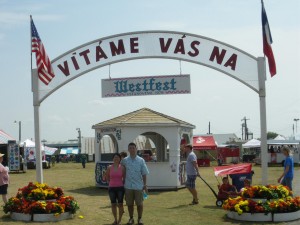
Despite nine years in residence here in central TX, I still feel like a Philadelphian exploring this new place. It’s probably why I remain fascinated by the many sociological and demographic curiosities here. In a recent post I mentioned some of the similarities between second-generation Americans and young white central Texans today. Both struggle with adapting and conforming to the Anglo northern upper class mainstream, and this is evidenced by their efforts at code-switching and minimizing any hint of an accent that might suggest southern provincialism. These surprising similarities help me to better contextualize the kinds of patterns I see among Asian Americans by looking at other Americans by way of analogy.
The recent explosion at a fertilizer plant in West TX (about 20 miles north of Waco) brought central TX back to my mind. Nothing would have prepared any of us for the strange alignment in time between the Boston Marathon bombing (and for those who are into other coincidences in time, note that 66 years earlier on nearly the same day (April 16, 1947 compared to April 17, 2013), over 580 people perished in an industrial explosion in Texas City with thousands more injured. And, 20 years ago, in Elk TX, just 9 miles outside of Waco, the standoff between a small religious group called the Branch Davidians and the combined forces of the ATF Bureau and FBI ended, leaving 86 dead (including 76 adults and children of that religious group).
As I wrote some of this, a memorial service was taking place at my university’s basketball auditorium to honor the first responders who perished in their efforts to bring others to safety. The death toll brings to mind some important demographic realities as one friend of mine mentioned in Facebook. He wrote:
Perspective: West only has a population of 2,800. 15 or more people were killed with more than 160 injured. If something of the same magnitude happened in the metropolitan population Waco, the count would have been 1,255 dead, and 13,390 injured, which is almost unimaginable. But I imagine that is just how those in West feel now. The numbers may sound small compared to some disasters, but in perspective, it is unbelievable.
Indeed. The lives lost as a proportion of the population of the affected area changes the significance of the impact. In reflecting on this incident I thought about the ethnic population of West. Numerous friends on Facebook changed their background images to the current Czech flag to show solidarity with the people there like the image shown above. If you drive through the city there’s clearly a strong Czech influence at least in name’s like Czech Bakery, Czech Inn, Czech Stop. In fact my wife and I attended the annual WestFest which not surprisingly featured a great deal of Czech culture:
 According to the 2009 Census information, Czech Americans number around 1.9 million about the number of Korean Americans depending on whether one includes anyone with some Korean heritage (1.7 million) or exclusively Korean heritage (1.4 million). Like many ethnic groups in the US, historical migration and settlement resulted in specific geographic concentrations of Czechs. Given the importance of farming as a part of the Czech identity, it comes as no surprise that the largest numerical presence is in Texas where affordable land was plentiful. And as it turns out, West contains the largest concentration of Czechs in the US at about 41 percent.
According to the 2009 Census information, Czech Americans number around 1.9 million about the number of Korean Americans depending on whether one includes anyone with some Korean heritage (1.7 million) or exclusively Korean heritage (1.4 million). Like many ethnic groups in the US, historical migration and settlement resulted in specific geographic concentrations of Czechs. Given the importance of farming as a part of the Czech identity, it comes as no surprise that the largest numerical presence is in Texas where affordable land was plentiful. And as it turns out, West contains the largest concentration of Czechs in the US at about 41 percent.
But apart from this figure, the Czech people of West are not otherwise remarkable demographically. Today’s immigrant Czechs reside in other communities such as Massaryktown, FL, and Mifflinville, PA. The highest percentage of Czechs is actually in Nebraska where 5 percent of the state claims this heritage. Texas by contrast is 0.5 percent Czech. It is perhaps this ordinariness that makes this extraordinary tragedy stand out as it does.
Throughout the memorial family and other loved ones often spoke of the faith of the first responders. This was notable to me when I discovered that religion is not a significant feature in today’s Czech Republic. According to the Pew study of religion around the world, 76 percent of Czechs are unaffiliated, and another 23 percent are Christian.
Given the size of the population, we cannot estimate the religious demography of Czech Americans but it’s a fair guess that they are much more religious, and more Christian than their counterparts in the old country. This difference may be a recent trend but it may also reflect the pro-Christian migration to the US that historians and sociologists have pointed out. Perhaps too, the heightened religious sensibilities of Texans motivate some Czechs to consider religion more intentionally than they might otherwise. I wonder too if in some way being part of a Czech community helps preserve ethnicity in the way that second-generation Korean and Chinese Protestants hold on to their ethnicity through a faith community. Who knows, perhaps what we see in the Czech religious communities might reflect what we will see among Asian American Christians a few generations later.
Central Texas continues to have these surprises, and I become aware of them through events both tragic and inspiring. For those who would still like to send aid and support to the community, click on this page for a list of organizations that are receiving donations and other support for the people of West, TX.














